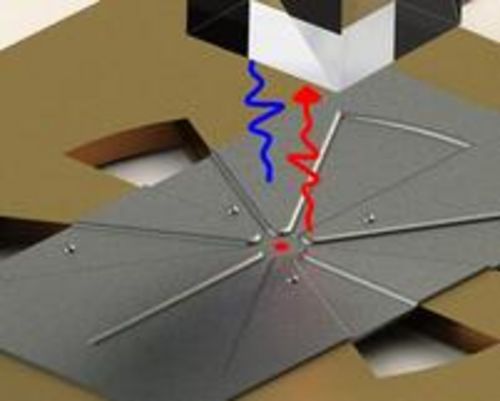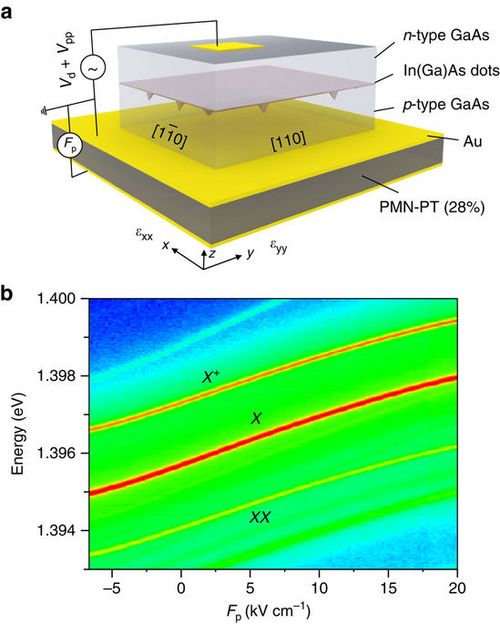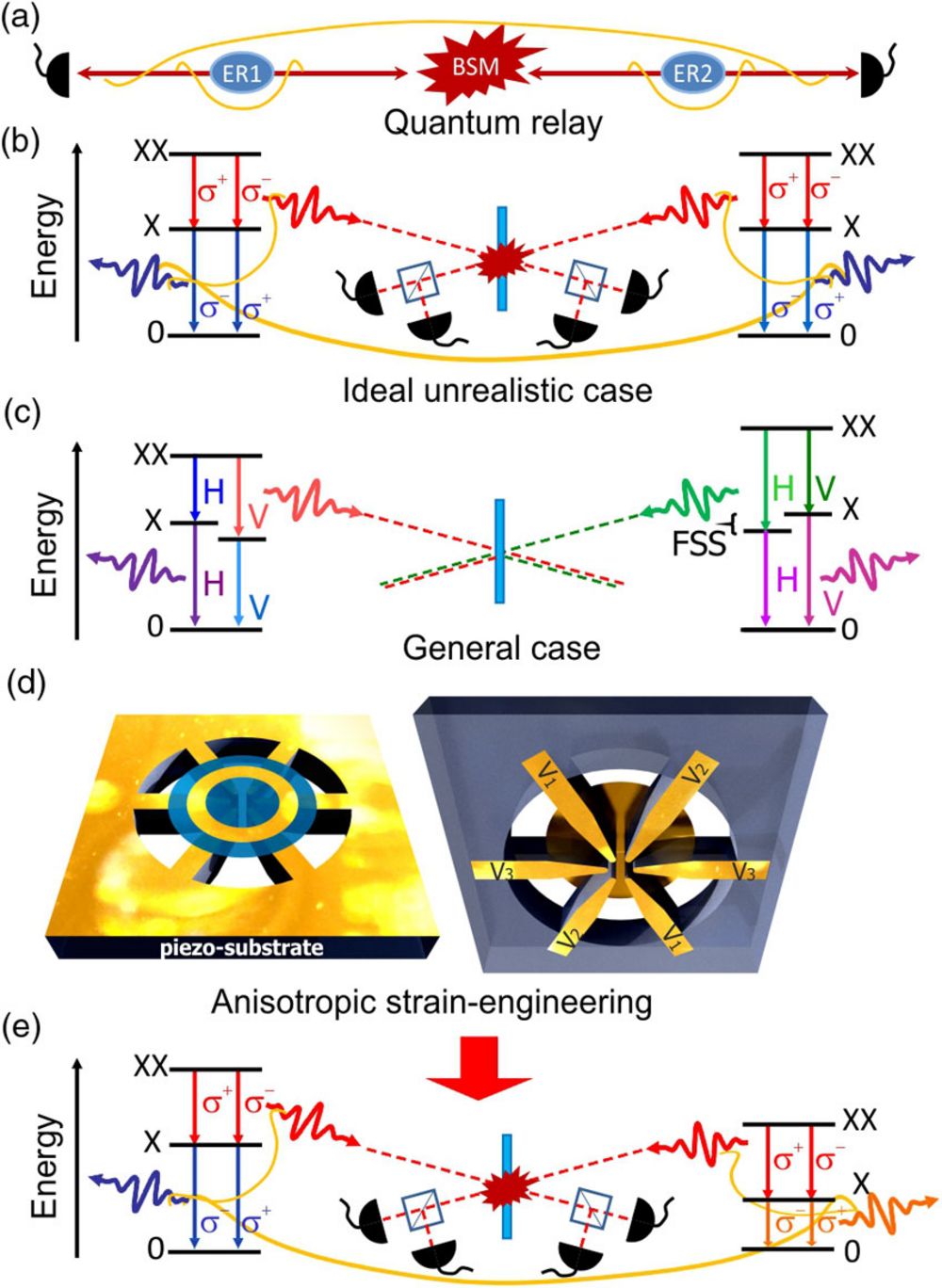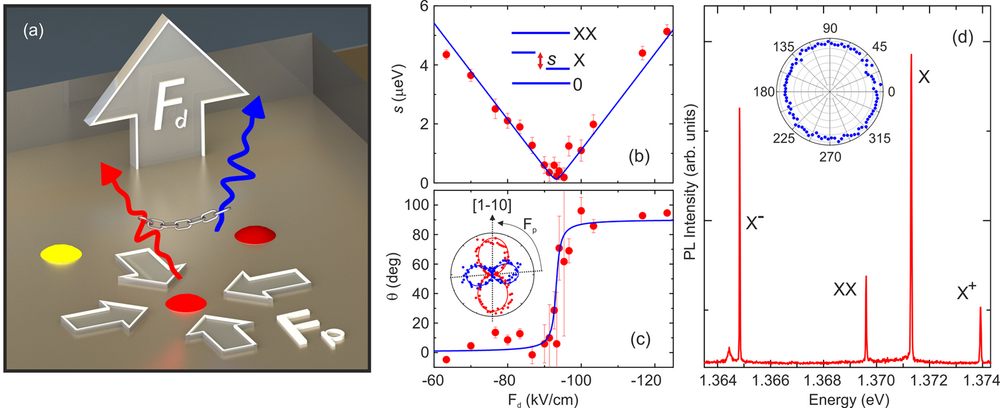The prospect of using the quantum nature of light for secure communication keeps spurring the search and investigation of suitable sources of entangled-photons. Semiconductor quantum dots are arguably the most attractive. They can generate indistinguishable entangled-photons deterministically, and are compatible with current photonic-integration technologies, a set of properties not shared by any other entanglement resource. However, as no two quantum dots are identical, they emit entangled-photons with random energies. This hinders their exploitation in communication protocols requiring entangled-states with well-defined energies. Here, we introduce scalable quantum-dot-based sources of polarization-entangled-photons whose energy can be controlled via dynamic strain-engineering without degrading the degree of entanglement of the source. As a test-bench, we interface quantum dots with clouds of atomic vapours, and we demonstrate slow-entangled-photons from a single quantum emitter. These results pave the way towards the implementation of hybrid quantum networks where entanglement is distributed among distant parties using scalable optoelectronic devices.
R. Trotta et al. Scalable Sources of Entangled Photons with Wavelength on Demand. arXiv:1507.06612, opens an external URL in a new window

Strain-tunable entangled-light-emitting diodes with high yield and fast operation speed
Triggered sources of entangled photons play crucial roles in almost any existing protocol of quantum information science. The possibility to generate these non-classical states of light with high speed and using electrical pulses could revolutionize the field. Entangled-light-emitting-diodes (ELEDs) based on semiconductor quantum dots (QDs) are at present the only devices that can address this task 5. However, ELEDs are plagued by a source of randomness that hampers their practical exploitation in the foreseen applications: the very low probability (~10-2) of finding QDs with sufficiently small fine-structure-splitting for entangled-photon-generation. Here, we overcome this hurdle by introducing the first strain-tunable ELEDs (S-ELEDs) that exploit piezoelectric-induced strains to tune QDs for entangled-photon-generation. We demonstrate that up to 30% of the QDs in S-ELEDs emit polarization-entangled photon pairs with entanglement-fidelities as high as f+ = 0.83(5). Driven at the highest operation speed of 400 MHz ever reported so far, S-ELEDs emerge as unique devices for high-data rate entangled-photon applications.
J. Zhang et al. High yield and ultrafast sources of electrically triggered entangled-photon pairs based on strain-tunable quantum dots Nature Communications 6, 10067 (2015), opens an external URL in a new window
In Collaboration with our collegues from IFW Dresden, opens an external URL in a new window.

Energy-Tunable Sources of Entangled Photons: A Viable Concept for Solid-State-Based Quantum Relays
We propose a new method of generating triggered entangled photon pairs with wavelength on demand. The method uses a microstructured semiconductor-piezoelectric device capable of dynamically reshaping the electronic properties of self-assembled quantum dots (QDs) via anisotropic strain engineering. Theoretical models based on k⋅p theory in combination with finite-element calculations show that the energy of the polarization-entangled photons emitted by QDs can be tuned in a range larger than 100 meV without affecting the degree of entanglement of the quantum source. These results pave the way towards the deterministic implementation of QD entanglement resources in all-electrically-controlled solid-state-based quantum relays.
R. Trotta et al. Energy-Tunable Sources of Entangled Photons: A Viable Concept for Solid-State-Based Quantum Relays Phys. Rev. Lett. 114, 150502 (2015), opens an external URL in a new window

Highly entangled Photons from Semiconductor Quantum Dots
Entanglement resources are key ingredients of future quantum technologies. If they could be efficiently integrated into a semiconductor platform, a new generation of devices could be envisioned, whose quantum-mechanical functionalities are controlled via the mature semiconductor technology. Epitaxial quantum dots (QDs) embedded in diodes would embody such ideal quantum devices, but a fine-structure splitting (FSS) between the bright exciton states lowers dramatically the degree of entanglement of the sources and hampers severely their real exploitation in the foreseen applications. In this work, we overcome this hurdle using strain-tunable optoelectronic devices, where any QD can be tuned for the emission of photon pairs featuring the highest degree of entanglement ever reported for QDs, with concurrence as high as 0.75 ± 0.02. Furthermore, we study the evolution of Bell’s parameters as a function of FSS and demonstrate for the first time that filtering-free violation of Bell’s inequalities requires the FSS to be smaller than 1 μeV. This upper limit for the FSS also sets the tuning range of exciton energies (∼1 meV) over which our device operates as an energy-tunable source of highly entangled photons. A moderate temporal filtering further increases the concurrence and the tunability of exciton energies up to 0.82 and 2 meV, respectively, though at the expense of 60% reduction of count rate.
R. Trotta et al. Highly Entangled Photons from Hybrid Piezoelectric-Semiconductor Quantum Dot Devices. Nano Lett. 14 (6), pp 3439–3444 (2014), opens an external URL in a new window

 Go to JKU Homepage
Go to JKU Homepage


